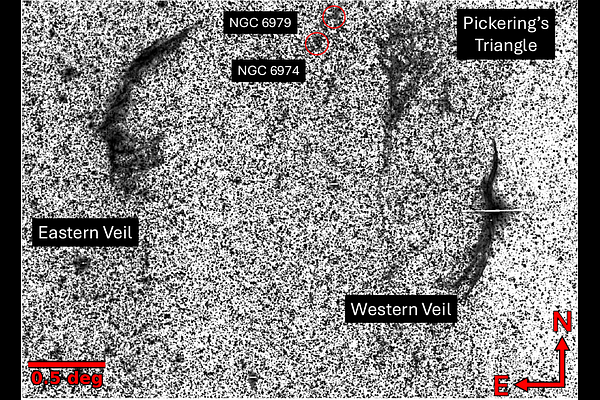The ASAS-SN Low Surface Brightness Survey I: Proof-of-Concept and Potential Applications

The ASAS-SN Low Surface Brightness Survey I: Proof-of-Concept and Potential Applications
Evan Jennerjahn, Michael A. Tucker, Benjamin J. Shappee, Christopher S. Kochanek, Subo Dong, Annika H. G. Peter, Jose L. Prieto, K. Z. Stanek, Todd A. Thompson
AbstractThe ASAS-SN Low Surface Brightness Survey utilizes the $\sim7$ years of g-band CCD data from ASAS-SN (The All-Sky Automated Survey for Supernovae) to create stacked images of the entire sky. It is significantly deeper than previous photographic surveys. Our median/95th percentile cumulative exposure time per field is 58.1/86.8 hours, and our median $3{\sigma}$ g-band surface brightness limit off the Galactic plane ($|b| > 20{\deg}$) is 26.1 mag arcsec$^{-2}$. We image large-scale diffuse structures within the Milky Way, such as multiple degree-spanning supernova remnants and star-forming nebulae, and tidal features of nearby galaxies. To quantify how effective our deep images are, we compare with a catalog of known ultra-diffuse galaxies and find a recovery rate of 82$\%$. In the future, we intend to use this data set to perform an all-sky search for new nearby dwarf galaxies, create an all-sky Galactic cirrus map, create an all-sky low surface brightness mosaic for public use, and more.